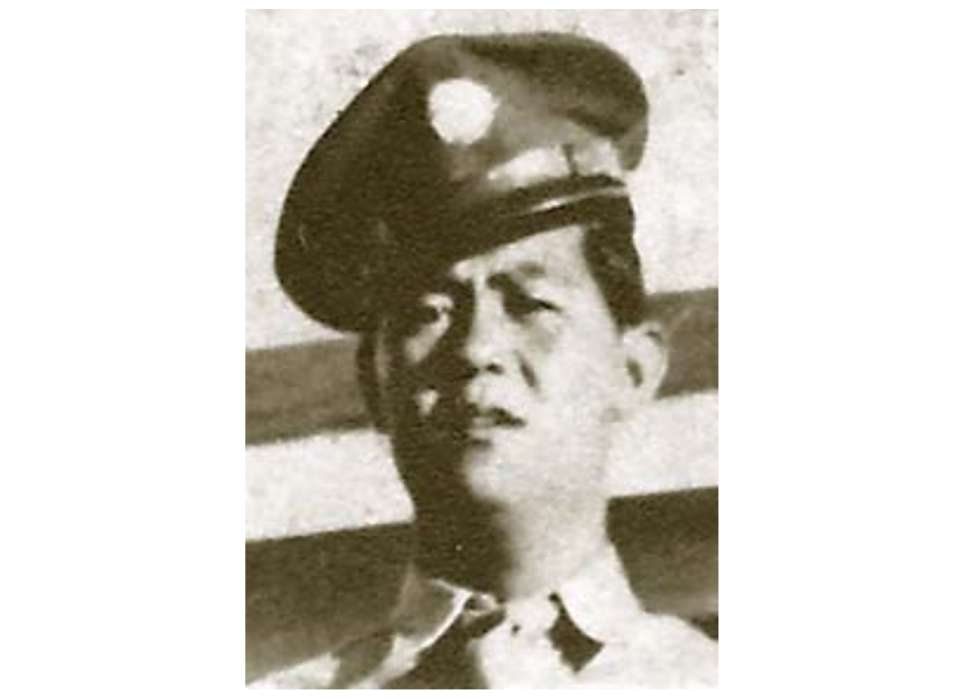Top image: Private Mikio Hasemoto (1916–1943). US Government Photo.
During World War II, Americans of many different races served their country. Usually placed in segregated units, these men served with distinction but due to discrimination were often denied their rightful honors. Among these men was Mikio Hasemoto, a second-generation Japanese American, or Nisei. While thousands of Japanese Americans were incarcerated under Executive Order 9066 following the attack on Pearl Harbor, Hasemoto and many other loyal citizens volunteered to serve their country, even before America’s entry in the war.
Born in Honolulu, Hawaii, in 1916, Hasemoto joined the Army in June 1941. He and other Nisei were present when the Japanese attacked that December. Hasemoto then volunteered for the 100th Infantry Battalion, a newly created, racially segregated unit in 1942. The unit was then sent to camps across the United States for training. In late summer 1943, the 100th deployed to the Mediterranean in support of the campaigns on the Italian peninsula. Arriving after the amphibious assault of Salerno, the 100th fought German units as they effectively used the defensible terrain of the Apennine Mountains.
On November 29, 1943, while unrelentingly engaging German units on the Gustav Line, which barred the Allies’ path to Rome, Private Hasemoto made the ultimate sacrifice for his nation, as described in his Medal of Honor citation:
Private Mikio Hasemoto distinguished himself by extraordinary heroism in action on 29 November 1943, in the vicinity of Cerasuolo, Italy. A force of approximately 40 enemy soldiers, armed with machine guns, machine pistols, rifles, and grenades, attacked the left flank of his platoon. Two enemy soldiers with machine guns advanced forward firing their weapons. Private Hasemoto, an automatic rifleman, challenged these two machine gunners. After firing four magazines at the approaching enemy, his weapon was shot and damaged. Unhesitatingly, he ran 10 yards to the rear, secured another automatic rifle and continued to fire until his weapon jammed. At this point, Private Hasemoto and his squad leader had killed approximately 20 enemy soldiers. Again, Private Hasemoto ran through a barrage of enemy machine gun fire to pick up an M-1 rifle. Continuing their fire, Private Hasemoto and his squad leader killed 10 more enemy soldiers. With only three enemy soldiers left, he and his squad leader charged courageously forward, killing one, wounding one, and capturing another. The following day, Private Hasemoto continued to repel enemy attacks until he was killed by enemy fire. Private Hasemoto's extraordinary heroism and devotion to duty are in keeping with the highest traditions of military service and reflect great credit on him, his unit, and the United States Army.
Despite heroically going above and beyond the call of duty, Hasemoto was initially awarded the Distinguished Service Cross—the second-highest honor for bravery. Decades later, after a review of decorations awarded to Japanese American and African American WWII veterans found these men had been overlooked because of their race, Hasemoto’s Distinguished Service Cross was upgraded to the Medal of Honor, and on June 21, 2000, Hasemoto was posthumously, and belatedly, awarded the nation’s highest military accolade.
For more information on the Nisei soldiers of the 100th Infantry Battalion and 442nd Infantry Regiment, click here.
John Curatola, PhD
John Curatola, PhD, is the Samuel Zemurray Stone Senior Historian at the Jenny Craig Institute for the Study of War and Democracy.
Cite this article:
MLA Citation:
APA Citation:
Chicago Style Citation:





![Max Fuchs, New York City cantor, sings as Rabbi Sydney [sic] Lefkowitz, Richmond, VA, conducts the first Jewish services from Germany.](/sites/default/files/styles/max_650x650/public/2025-10/image1.jpg)



